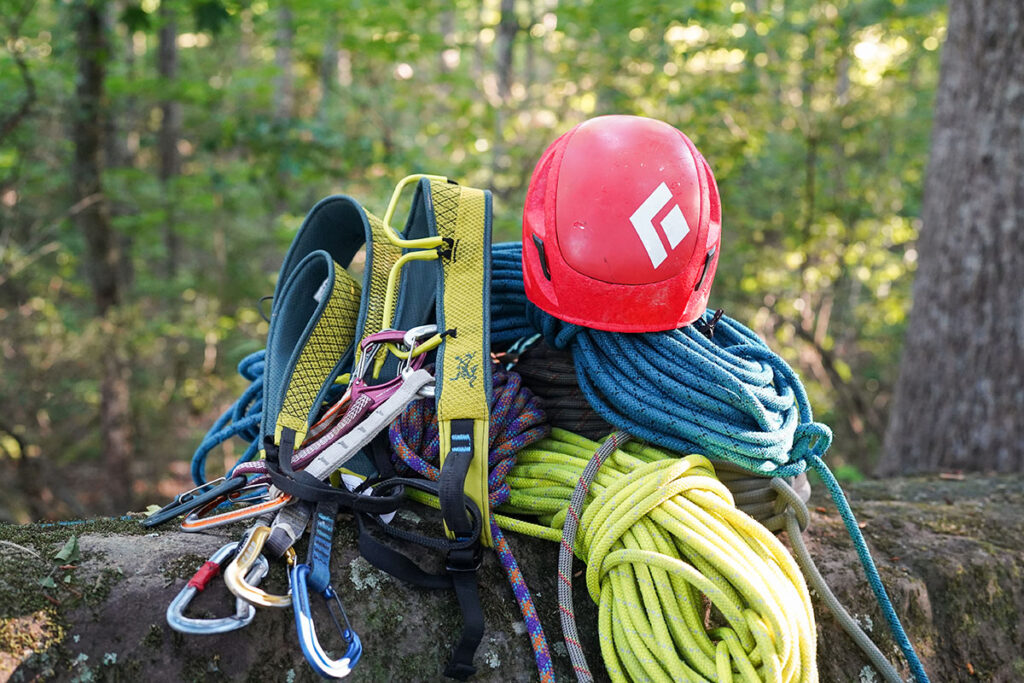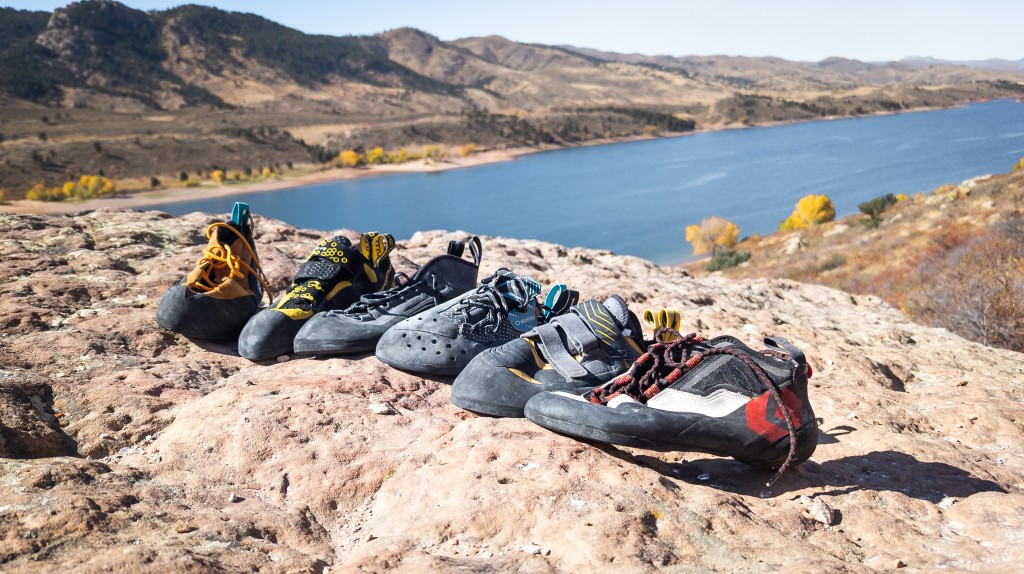Whether you’re a seasoned climber or just getting started, having the right climbing gear is essential for a safe and enjoyable experience. When levelling up your adventure, there are some climbing items you can’t go without. From climbing shoes to helmets, ropes, and carabiners, we’ve got you covered. So, grab your harness and get ready to gear up!
Different Gear for Different Levels

Climb beyond limits with high-quality climbing equipment. When doing so, one of the most important things to consider is your climbing level. If you’re a beginner, it’s important to start with the basics and level up as you progress. The first piece of equipment you’ll need is a good pair of climbing shoes.
Next on the list is a harness. This is what keeps you safely attached to the rope and helps distribute your weight evenly. Make sure to choose a harness that is comfortable and adjustable, so you can find the perfect fit. And don’t forget about the all-important chalk bag! Chalk helps keep your hands dry and provides extra grip when you need it most.
An experienced climber, on the other hand, will invest in a high-quality rope. Carabiners are another essential piece of equipment for advanced climbers. Let’s not forget about cams and nuts. These make the crucial outdoor climbing gear. Cams are spring-loaded devices that can be used to anchor a rope in fissures. Nuts, on the other hand, are passive pieces of gear that can be jammed into cracks to form a solid anchor.
Harnesses, Ropes, and Carabiners to Cover the Basics
Harnesses, ropes, and carabiners form the foundation of your climbing equipment. Understanding the fundamentals of each is critical to a safe and successful climb. A harness is a set of straps that wrap around your waist and thighs to keep you safely tied to the rope. Choose a harness that fits well and is pleasant to wear for long periods of time. Look for adjustable leg loops and waist belts to ensure a good fit.
Ropes keep you connected to your climbing buddy and give you protection in the event of a fall. The two primary types of ropes are dynamic and static. Dynamic ropes are meant to stretch and absorb the force of a fall. Static ropes, on the other hand, do not stretch and are commonly employed for rappelling or as a fixed line in rescue operations. Make sure you select the right rope for your climbing style and demands.
Carabiners are metal clips that attach your harness to your rope and other accessories. They come in a variety of forms and sizes, each with its own distinct characteristics. When choosing, look for ones that are lightweight, simple to use, and include a locking mechanism for increased security. It is also critical to frequently inspect your carabiners for signs of wear and tear.
Climbing Shoes Are a Must

Finding the right pair of climbing shoes can significantly improve your climbing experience. When on the hunt for the best pair, there are a few crucial elements to consider. First, consider the type of climbing you will be performing. Climbing shoes must be appropriate for this. Indoor climbing requires a comfortable, snug-fitting shoe with a sticky rubber sole.
For outdoor climbing, choose a more durable shoe with a stronger sole for better support on uneven terrain. Next, consider the fit. Climbing shoes should fit snugly, but not to the point of being painfully tight. You want them to be snug on your feet, with no additional space for your feet to slip around.
Take the time to try on various brands and designs to discover what will best fit for your foot. Finally, consider your climbing style and preferences. Some climbers choose a shoe with a downturned toe for more precision on small holds, while others prefer a flatter shoe for all-day comfort. Consider your climbing ambitions and pick a shoe that meets your requirements.
Helmet to Protect the Head
Safety should always be your top priority when climbing. That’s why it’s important to have the right safety rock climbing gear. One of the most important pieces is a climbing helmet. It will keep your head safe from falling rocks, and debris, as well as potential impacts during a fall.
There are a ton of choices and with new foam technologies, combined with technologies that have been perfected in biking or skiing helmets also making their way into climbing-specific models. This is one of the fastest-changing niches of climbing gear. Every climbing helmet you buy today comes with a form of lightweight foam that acts as an impact-diffusing agent.
This is true regardless of whether the foam is visible on the exterior or completely enclosed in a hard plastic shell. In most circumstances, the foam in your helmet can only withstand one significant direct blow in that precise spot before it needs to be replaced. If a second hit happens in the area that had previously been damaged, the resulting compressed foam would not absorb nearly as much power, leaving the helmet unusable.

